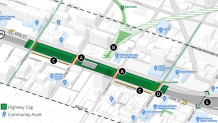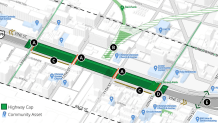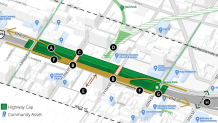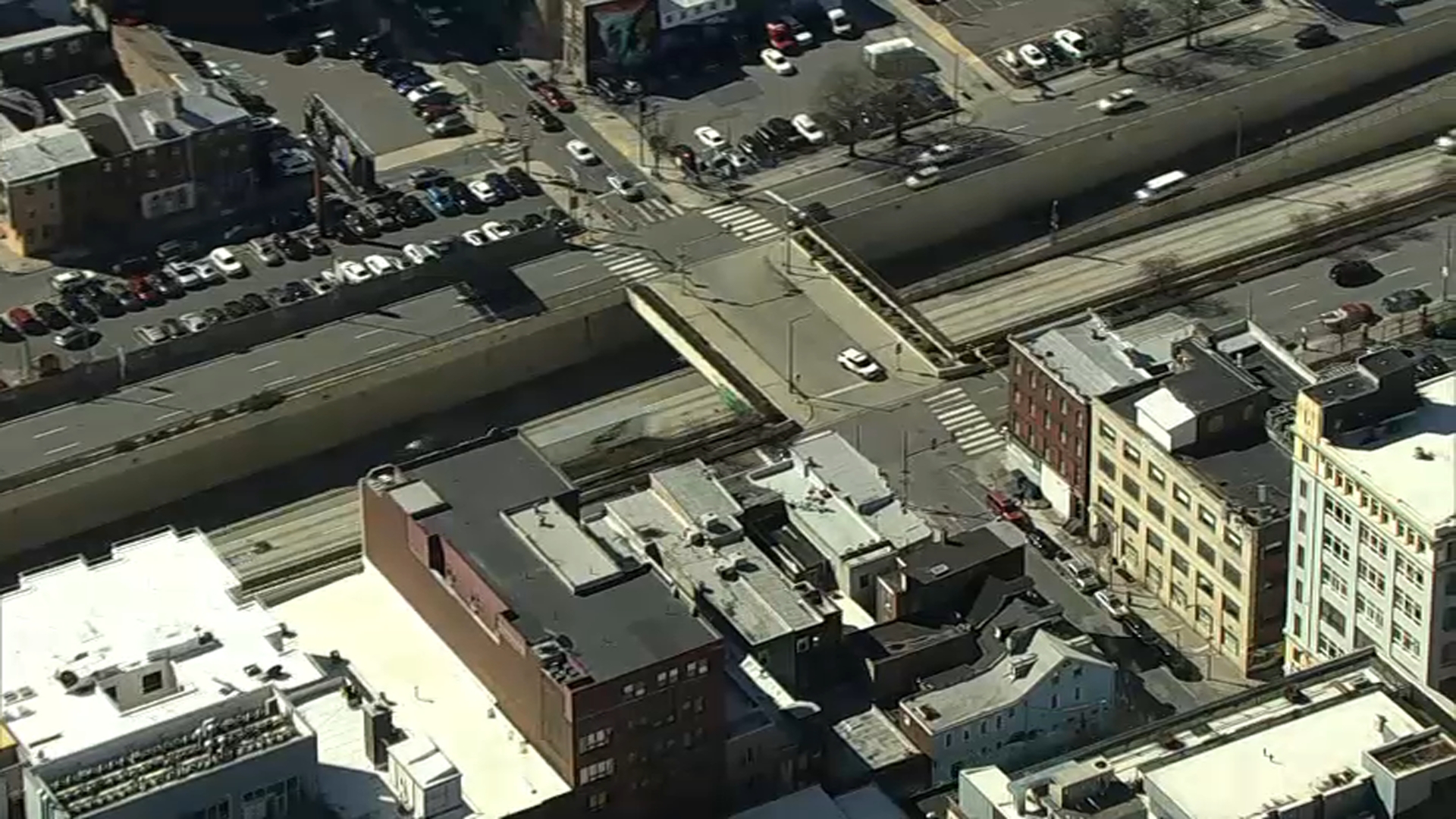What to Know
- A $4 million plan is underway to plan and design a cap over part of the Vine Street Expressway that would reconnect Philadelphia's Chinatown neighborhood.
- Dubbed "The Chinatown Stitch," the idea is to find a way to build something over the highway several years down the line by building a bridge over I-676.
- "All of these concepts are going to really change the experience that you're having of Vine Street because we are including a lot of traffic calming efforts for each concept kind of regardless of what we are going with."
An effort is underway in Philadelphia to reconnect the Chinatown neighborhood decades after the Vine Street Expressway cut it apart.
Upon announcing the plan earlier this year, Philadelphia dubbed the project exploring capping a portion of Interstate 676 "The Chinatown Stitch."
"The Chinatown Stitch: Reconnecting Philadelphia to Vine Street is a study to cap the Vine Street Expressway between Broad Street and 8th Street to reconnect Chinatown and Chinatown North," the City of Philadelphia says on its website.
Get Philly local news, weather forecasts, sports and entertainment stories to your inbox. Sign up for NBC Philadelphia newsletters.
The cap would allow for parks, buildings and open space above the expressway below, the City said.
Three plans to cover parts of the Vine Street Expressway, reconnect Chinatown
On Tuesday, the City unveiled a trio of concepts for the stitching plan. Each concept was considered after he City of Philadelphia’s Office of Transportation Infrastructure and Sustainability (OTIS) and the Philadelphia Chinatown Development Corporation (PCDC) heard from the public to "understand community goals and vision to address the problems with the Vine Street Expressway," the City said.
Each plan comes with benefits and shortfalls. And, none of the new proposals would cover I-676 until 10th street at the earliest.
Here are the three concepts now on the table:
1. Two-Block Concept: This concept adds caps for the full block between 10th and 11th Streets, and 12th and 13th Streets. There is an open gap between 11th and 12th Streets, which allows for required ventilation for the expressway.

2. Three-Block Concept: This concept adds a full continuous cap from 10th to 13th Streets, between the surface lanes of Vine Street. While this concept covers more of the expressway than Concept #1, it is significantly more costly and difficult to build.

3. Three-Block Shifted Street Concept: This concept is like the Three-Block Concept, but westbound Vine Street is shifted south to run next to eastbound Vine Street at 11th and 12th Streets. This concept is the most expensive and difficult to build but would create the most space of inclusive development.

Officials didn't give exact cost estimates, but did reveal it would likely range between the $20 million it cost to cover the highway in front of the Philadelphia Free Library and the more than $300 million it is taking to put a park over Interstate 95 near Penn's Landing.
Construction costs would vary based on how much of I-676 gets covered, officials said.
"All of these concepts are going to really change the experience that you're having of Vine Street because we are including a lot of traffic calming efforts for each concept kind of regardless of what we are going with," Megan M Clarkin, senior infrastructure program coordinator for Philadelphia's Office of Transportation, Infrastructure and Sustainability (OTIS), said Tuesday.
The City and PCDC are asking for the public to take an online survey about the new proposed designs. The survey is available in English and Chinese.
'A Beacon of hope for the Chinatown community'
In a news release announcing the project, the City explained the long history of a disconnected Chinatown:
"Since the 1960s, the Vine Street Expressway has been greeted with significant community opposition. Upon completion of construction in 1991, the expressway intensified the social and economic disconnect between the Chinatown and Chinatown North neighborhoods. The community engaged in numerous neighborhood plans and studies over the past twenty years."
Community leaders echoed the challenges of the community being cut apart.
“After more than three decades of harm and displacement caused by the Vine Street Expressway, the Reconnecting Communities grant is a beacon of hope for the Chinatown community,” John Chin, executive director for PCDC, said back in March.
A $1.8 million U.S. Department of Transportation’s Reconnecting Communities Pilot Program (RCP) grant is helping to accelerate the process to connect Chinatown and Chinatown North in Center City, officials said back in March.
The total cost of the planning phase -- which is set to wrap up in 2026 -- comes to about $4 million, with Philly, PennDOT, the John S. and James L. Knight Foundation and a number of private local donors supplying $2.2 million in matching funds.
“The funding from this grant will provide concrete change for Chinatown’s built environment, allowing for businesses, residents and future generations of our marginalized community to flourish," Chin said.
The plan is to ask for construction proposals by the fall of 2025 and awarding the contract by the spring of 2026.
Ultimately, according to Tuesday's presentation, officials hope to start construction by 2028, but that timetable remains uncertain.
Not the only Philly highway capping project
The city has recently been busy thinking of ways to cover highways as PennDOT broke ground on Wednesday on its $329-million project to cap I-95 and build a park at Penn's Landing along the Delaware River.
Sign up for our Breaking newsletter to get the most urgent news stories in your inbox.



